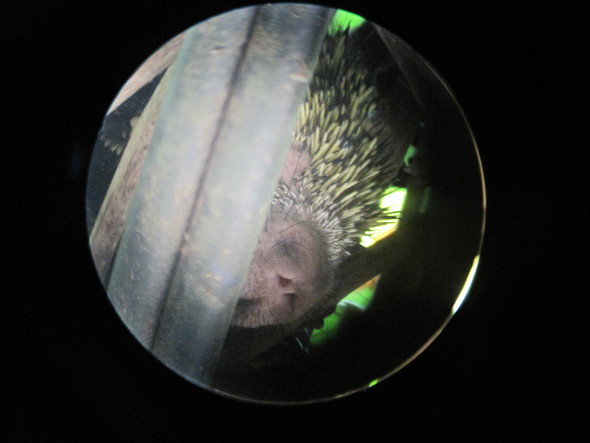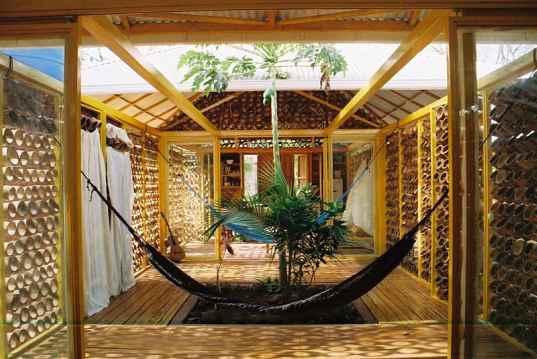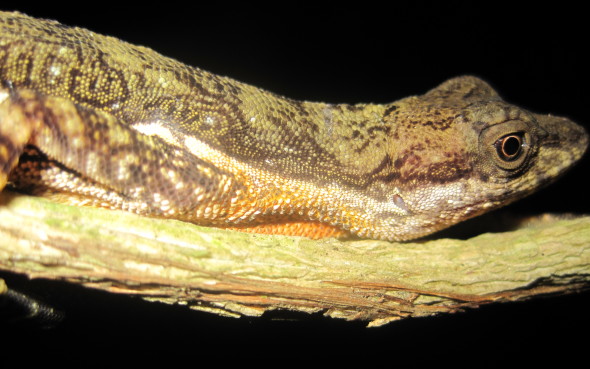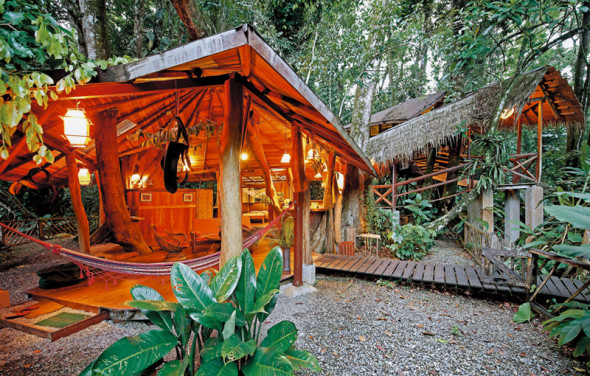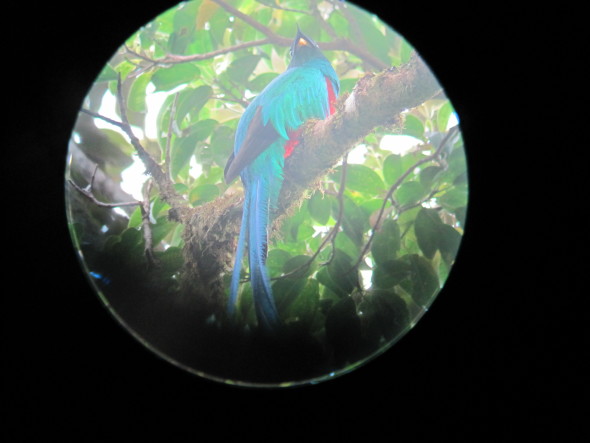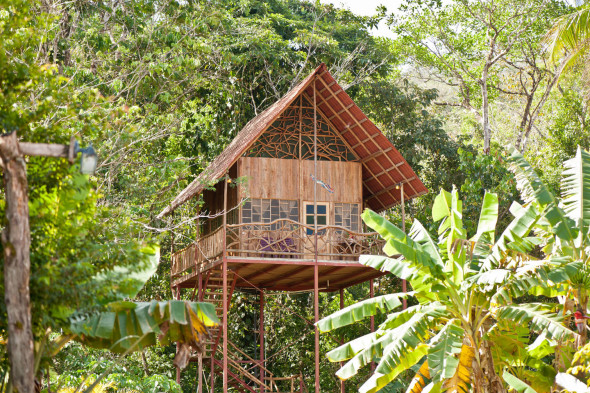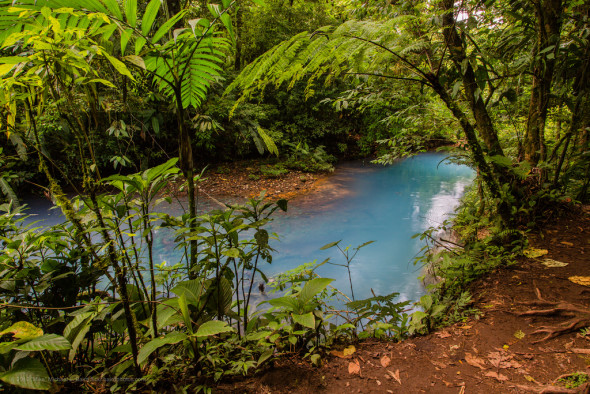There is an abundance of wildlife in Costa Rica, and while traveling with a naturalist guide, we were shown the best hiding places for elusive animals. Though I usually looked to the trees for birdlife—quetzals, toucans, toucanets, hummingbirds, motmots, and more—one look up led me to this Mexican hairy porcupine (Coendou mexicanus). A nocturnal, arboreal, solitary animal, the porcupine was slumbering in a tree when we found it hidden amongst the branches.
Blog
Hideaways
Architect Benjamin Garcia Saxe designed this two-room bamboo house with open courtyard for his mother, who had moved to Costa Rica to live in the forest “in search for home.” Originally living in a shelter that she built with scrap wood and plastic bags and with a view of the moon from her bed at night, her son designed this dwelling so that his mother could live more comfortably, in solitude in the forest, with a view of the moon. Made with bamboo rings and a metal roof, this building provides natural ventilation and protection from the sun. The architect sees his mother’s home as a way for her to always be close to him.
New Glass Frog Species Discovered in Costa Rica
Scientists have recently described a new species of glass frog found in the Caribbean foothills of Costa Rica. Named for lead author Brian Kubicki’s mother, Janet Diane Kubicki, Diane’s Bare-hearted Glassfrog (Hyalinobatrachium dianae) is Costa Rica’s fourteenth species of glass frog. This is the first time a new species of glass frog has been discovered since 1973. While many are hyped about this species’ resemblance to Kermit the Frog, we are even more excited that such a remarkable creature exists in Costa Rica’s rainforests!
Postcard from Costa Rica
Walking through the rainforest at night leads to many surprises. I went on a night hike with a naturalist guide and his ten-year-old son, who easily caught tiny frogs before the rest of us recognized their whereabouts. We were searching for frogs, in fact, and I searched for small snakes in each bromeliad I passed, but what we found was this lizard and another just like it, the two resting on a vine that hung from the canopy. When you don your headlamp and head out to the trail, there is much more beauty to be found than just the stars above you.
Hideaways
With a variety of accommodations, Tree House Lodge has a focus on sustainability. The buildings are built with fallen trees, the furniture is handcarved with sustainable wood, and one of the bathrooms is built around a living 100-year old Sangrillo tree. Water is gravity-fed and heated by solar panels, cleaning materials and detergents are biodegradable, and wastewater is cleaned by water lilies. The Lodge is working to reforest certain areas and prohibits the feeding of wild animals. Their commitment to leave natural areas pristine and beautiful is one to which all visitors to Costa Rica can agree.
Postcard from Costa Rica
On a search for the elusive Resplendent Quetzal, my group heard its distinctive cooing high in the canopy. We kept turning our heads, following the sound, until finally we saw the beautiful bird fly over a gap in the canopy, its long, elegant tail feathers trailing behind the rest of its body. It landed in a tree and our guide quickly located it in the spotter, allowing me to take this picture. Its feathers, iridescent in the sunlight, gave its color and form extra beauty. Later, we would be lucky enough to watch a mated pair build a nest together, but this first glimpse is unforgettable.
Hideaways
Within driving distance from Volcano Arenal, this tree house is surrounded by mineral-rich, natural hot springs. The tree house sits in 35 acres of surrounding rainforest filled with two-toed sloths, iguanas, capuchin and mantled howler monkeys, tree frogs, toucans, hummingbirds, and butterflies. An afternoon on the balcony observing the sights and sounds of the rainforest canopy sounds like a dream!
Costa Rica goes 75 Days without Fossil Fuel
For 75 straight days (and counting), Costa Rica has met 100% of its power demand with renewable energy. Most of this energy has come from four hydroelectric power facilities, due to heavy rainfall this year. The country supplements this energy with other sources of renewable energy, including geothermal, solar, biomass, and wind sources. Costa Rica has plans to expand their geothermal energy infrastructure to contribute more to renewable energy use; in 2014, the Costa Rican Legislative Assembly approved a $958 million geothermal project to help Costa Rica reach and maintain the use of 100% renewable energy. Bravo on reaching this zero-emissions milestone and maintaining it through the first quarter of 2015!
The Harmony Hotel uses solar panels as a renewable energy source. Check out the Harmony Hotel’s other sustainability efforts here.
Photo Credit: Mike Baird / CC BY 2.0

